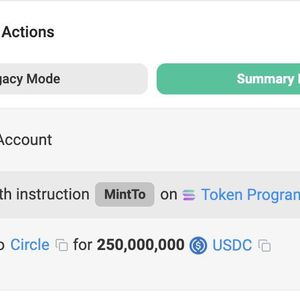Shocking news has emerged from the global trade arena as Bloomberg reports a significant setback in EU-U.S. trade negotiations. For those in the cryptocurrency world, where global economic winds can drastically shift market sentiment, this development is particularly noteworthy. Are we on the brink of a new wave of economic uncertainty fueled by persistent tariffs? Let’s dive into the details and understand what this means for the global economy and potentially, the crypto landscape. What’s the Buzz About Stalled EU US Trade Talks? The crux of the matter is that recent EU US trade talks have hit a wall. Despite hopes for eased trade relations, especially after a period of strained transatlantic ties, it appears that the U.S. is holding firm on its existing tariff policies. Bloomberg’s report highlights that the U.S. is signaling that most tariffs, particularly those targeting crucial sectors like cars and metals, are here to stay. This is a significant departure from what many in the EU were hoping for, and it sets the stage for potential trade friction in the near future. Here’s a quick rundown of what we know: Little Progress: Negotiations between the EU and U.S. have reportedly made minimal headway. Tariffs to Remain: The U.S. is indicating that existing tariffs, especially on cars and metals, will likely persist. EU Countermeasures: In anticipation of failed talks, the EU is actively preparing countermeasures. 90-Day Delay: There’s a 90-day window before the situation escalates further, providing a brief period for potential diplomatic maneuvers or for the EU to finalize its response. This situation is more than just bureaucratic wrangling; it’s about real-world economic impacts that could ripple across various sectors, including the increasingly interconnected world of cryptocurrencies. Why Should Crypto Investors Care About Tariffs and the Global Economy? You might be thinking, “What do tariffs on cars and metals have to do with Bitcoin or Ethereum?” The answer lies in the interconnected nature of the global economy . Tariffs are essentially taxes on imported goods, and they can trigger a cascade of economic effects: Increased Costs for Businesses: Tariffs raise the cost of imported materials and components. This can lead to higher production costs for businesses, which are often passed on to consumers in the form of higher prices. Inflationary Pressures: As prices rise, inflation can become a concern. In an inflationary environment, investors often look for assets that can maintain or increase their value, and sometimes, this leads to increased interest in assets like cryptocurrencies, which are often seen as a hedge against inflation (though this is still a debated topic). Trade Wars and Economic Uncertainty: When major economies like the EU and the U.S. engage in trade disputes, it creates economic uncertainty. Uncertainty makes traditional markets volatile, and in such times, some investors might seek refuge in alternative assets, including crypto. Conversely, risk-averse investors might pull back from all markets, including crypto, during periods of high uncertainty. Impact on Supply Chains: Tariffs can disrupt global supply chains. While the direct impact on the crypto industry’s supply chain might be less obvious, broader economic disruptions can affect investor sentiment and overall market stability. Currency Fluctuations: Trade tensions can lead to fluctuations in currency exchange rates. A stronger or weaker dollar or euro can influence the value of crypto assets, especially when priced against these fiat currencies. In essence, while the crypto market isn’t directly trading cars or metals, it’s deeply intertwined with the broader economic climate. Events like stalled trade negotiations and the imposition of tariffs are signals of potential economic shifts that can influence investor behavior across all asset classes. EU Countermeasures: What Could Be the Next Move in Trade Negotiations? The EU isn’t standing idly by. The report suggests that the EU is actively preparing countermeasures in case the trade talks completely break down after this 90-day delay. What might these countermeasures look like, and what are the potential implications? Potential EU Countermeasures Possible Impact Retaliatory Tariffs: The EU could impose its own tariffs on U.S. goods. This could escalate the trade dispute, leading to a tit-for-tat tariff war. This would further strain EU-U.S. relations and increase economic uncertainty. WTO Challenges: The EU could challenge the U.S. tariffs at the World Trade Organization (WTO). WTO disputes can be lengthy and may not provide immediate relief, but a successful challenge could pressure the U.S. to reconsider its tariff policies in the long run. Diplomatic Pressure: The EU could increase diplomatic efforts to persuade the U.S. to return to the negotiating table and reconsider its stance on tariffs. Diplomacy can be effective, but its success depends on the political will and priorities of both sides. Focus on Other Trade Partners: The EU might shift its focus to strengthening trade relationships with other global partners, potentially diversifying away from reliance on the U.S. in certain sectors. This could reshape global trade flows and alliances over time, potentially impacting the balance of economic power. The EU’s response will be crucial in determining whether this situation escalates into a full-blown trade conflict or if a path to de-escalation can be found within the 90-day window. For crypto investors, monitoring these developments is essential, as heightened trade tensions can contribute to market volatility. Actionable Insights for Crypto Traders: Navigating Trade Uncertainty So, what can crypto investors and traders take away from this situation? Here are some actionable insights : Stay Informed: Keep a close watch on news related to EU-U.S. trade relations. Bloomberg, Reuters, and other reputable financial news sources will be crucial for updates. Diversify Your Portfolio: In times of economic uncertainty, diversification is key. Don’t put all your eggs in one basket. Consider diversifying across different cryptocurrencies and potentially other asset classes. Manage Risk: Be prepared for potential market volatility. Use risk management tools like stop-loss orders to protect your investments. Avoid over-leveraging in highly uncertain times. Consider Stablecoins: If you anticipate increased market volatility, consider holding a portion of your portfolio in stablecoins to reduce exposure to price swings. Long-Term Perspective: Remember that market fluctuations are a normal part of the crypto cycle. Focus on your long-term investment strategy and avoid making impulsive decisions based on short-term news. Understand Global Economic Indicators: Broaden your understanding of global economic indicators and how they can influence crypto markets. Trade disputes, inflation rates, and GDP growth are all factors to consider. The breakdown in EU-U.S. trade talks is a reminder that the crypto market operates within a larger global economic and political context. Staying informed, being prepared, and maintaining a balanced perspective are vital for navigating these uncertain times. Conclusion: A Looming Trade Shadow and Its Potential Crypto Echo The stalled EU-U.S. trade talks and the likely continuation of tariffs cast a shadow over the global economic landscape. While the direct impact on the cryptocurrency market is complex and multifaceted, the potential for increased economic uncertainty, inflationary pressures, and market volatility is undeniable. For crypto investors, this development serves as a powerful reminder of the importance of staying informed, managing risk effectively, and understanding the broader global forces that can influence the digital asset space. As the EU prepares its countermeasures and the 90-day delay unfolds, the world will be watching closely to see if a trade war can be averted, and what the ultimate economic fallout might be. The crypto market, ever sensitive to global sentiment, will undoubtedly be paying attention. To learn more about the latest crypto market trends, explore our article on key developments shaping Bitcoin price action.














